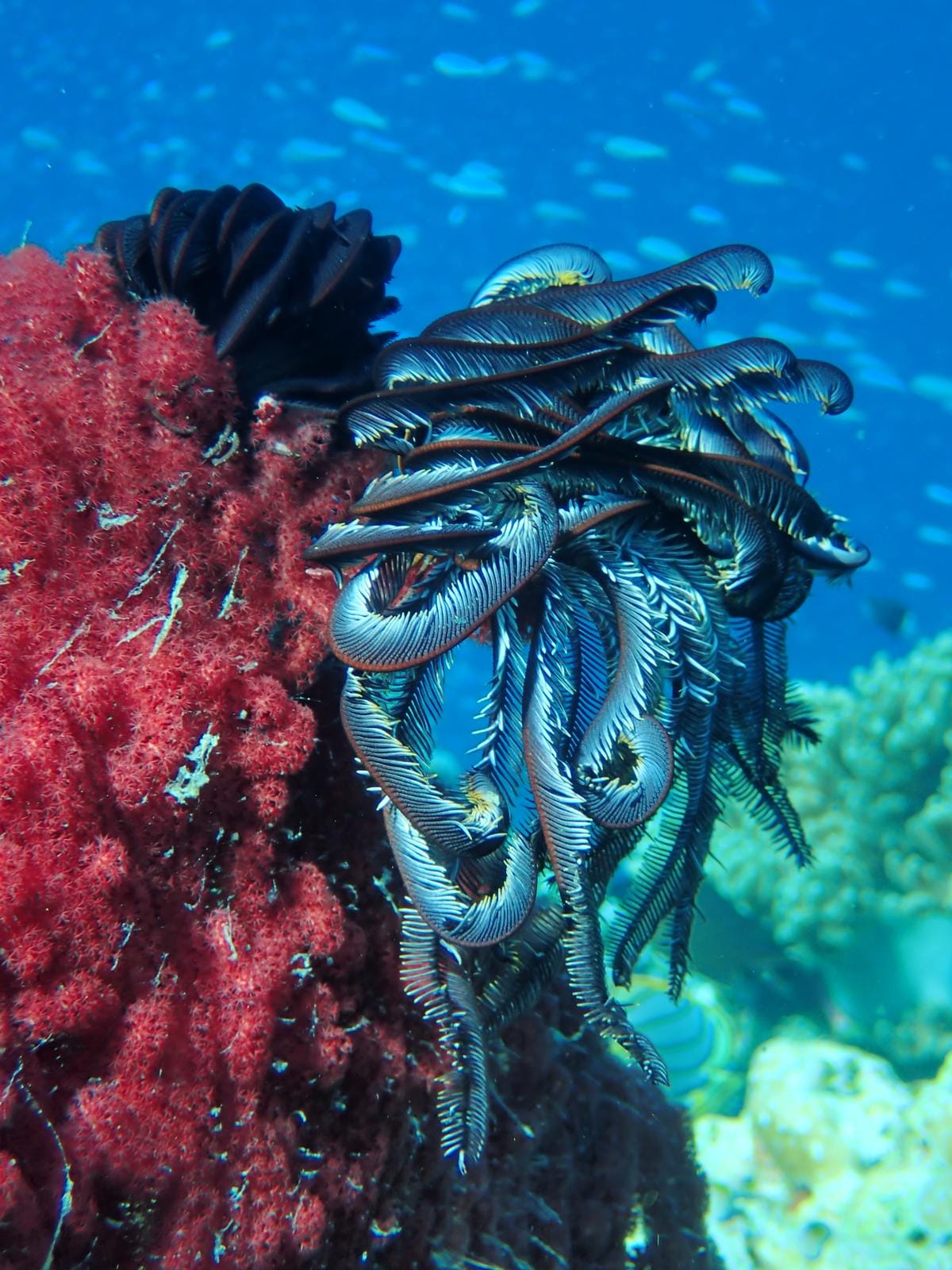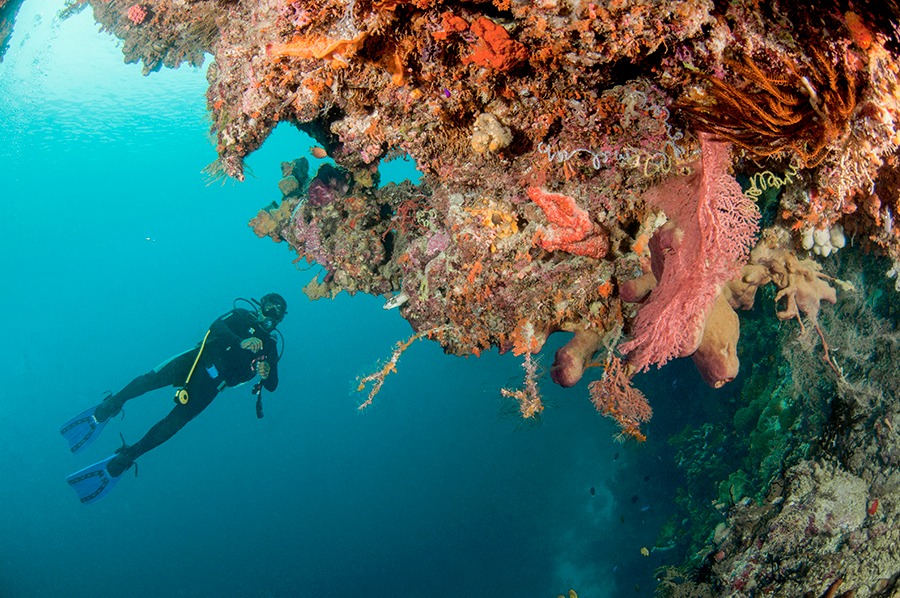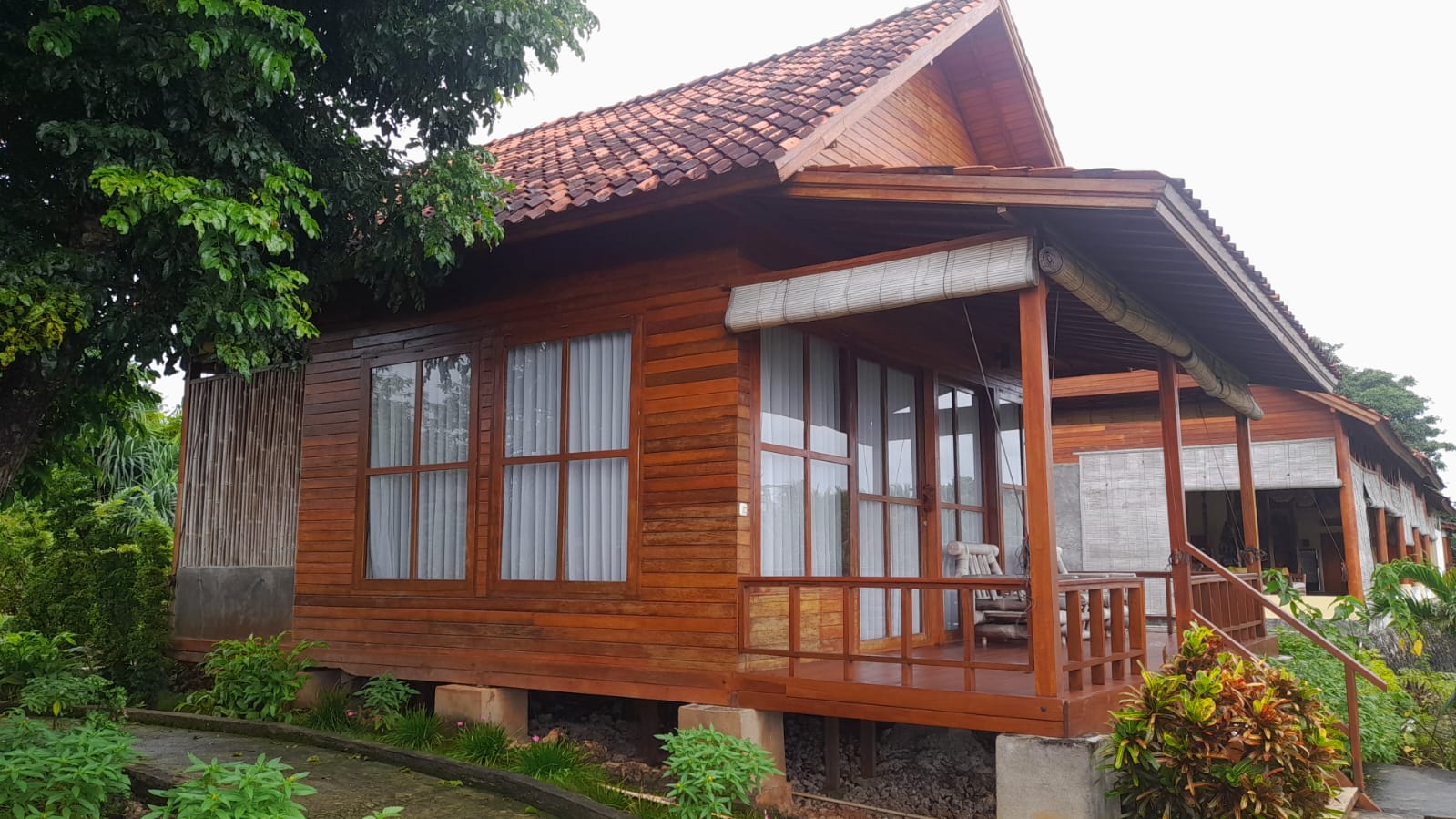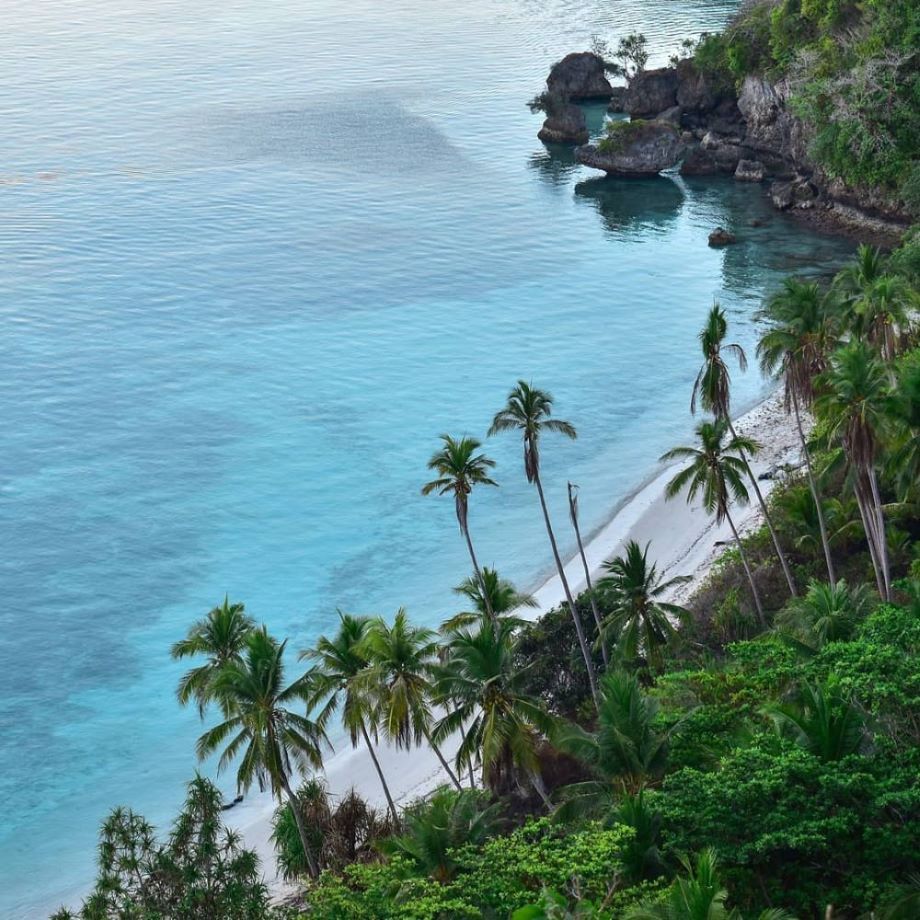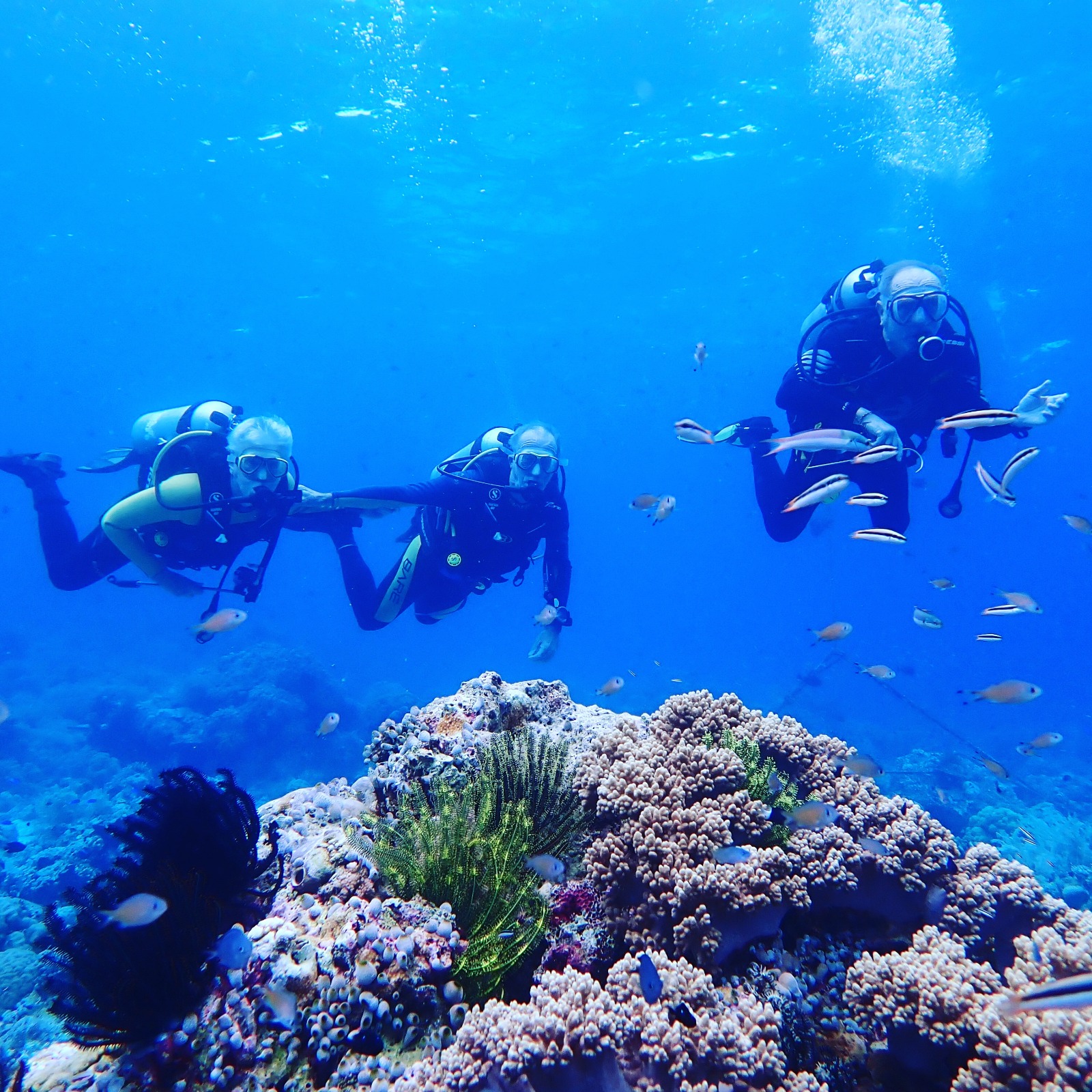WELCOME TO
Marind Dive Eco Resort
in
Wakatobi National Park
WHO ARE WE?
“We are proud to be an eco-conscious resort and consider the environmental and socio-economical effect of every aspect of our operation.”
About Wakatobi and Buton Island
Wakatobi National Park, also referred to as Kepulauan Toekang Besi, lies in the southeastern region of Sulawesi, nestled between the Banda Sea to the northeast and the Flores Sea to the southwest. The name Wakatobi originates from a combination of its four primary islands: Wangi-wangi, Kaledupa, Tomia, and Binongko. Designated as a tentative World Heritage Site since 2005, it stands as Indonesia's third-largest marine park, celebrated as an aquatic paradise by none other than Jacques Cousteau. Encompassing the entire Wakatobi District, it spans 1.3 million hectares, with 900,000 hectares dedicated to tropical coral reefs. Wakatobi boasts the highest diversity of reef and fish species globally and forms Indonesia's largest barrier reef, trailing only the Great Barrier Reef in Australia. Home to an array of marine life, including large and small fish, dolphins, turtles, and whales, the archipelago comprises 143 islands, with seven inhabited and a total population nearing 120,000. Notable among the residents are the Bajo communities, seafaring nomads prevalent across Indonesia's remote islands. Tomia, the third-largest island in Wakatobi, is accessible within 2-4 hours by public boat from Wangi-wangi or Wanci. Renowned as a premier dive site for over a decade, Tomia even boasts a direct route from Bali for resort guests. Public boats typically dock at Waha or Harbou Wangiwangi, providing access to Tomia's Island. Beyond its marine splendors, Tomia offers exploration opportunities via motorbike, bicycle, or car, inviting visitors to engage with local communities, savor indigenous cuisine, lounge on pristine beaches, explore heritage sites and caves, or simply leisurely traverse the island's scenic landscapes.
Located east of Buton Island, the Wakatobi Islands were formerly governed by the Buton Kingdom and have emerged as a crucial maritime crossroads connecting the eastern and western regions of the Nusantara archipelago. In addition to their abundant natural resources, the Wakatobi Islands boast significant archaeological remains and traditional fortifications scattered throughout, indicative of residential sites that encapsulate the islands' archaeological heritage. Examination of ceramic artifacts indicates a timeline dating back to at least the 15th century, with Qing dynasty ceramics from the 17th to 19th centuries being particularly prevalent. Viewing this through a historical lens, it becomes evident that the maritime traditions of the Wakatobi people are deeply rooted in the formation of local communities. Moreover, there exists a strong correlation between history, maritime customs, and archaeological remnants, shedding light on the legacy left by immigrants who played a pivotal role in shaping the Wakatobi Islands' communities.land
About Tomia Island
Tomia Island, situated between Kaledupa to the south and Binongko to the north, is renowned for its captivating underwater landscapes and cultural richness. It's a two-hour journey from Tomia to Wanci City, the administrative hub of Wakatobi regency, accessible by speedboat. Tomia, the third island in the Wakatobi archipelago, has gained acclaim as a premier dive destination for over a decade. Boasting more than 40 named and mapped dive sites, Tomia has secured its reputation among divers worldwide. Among these, Roma's Reef stands out as a must-visit for seasoned divers, offering both challenge and beauty. These sites offer a diverse range of marine life and stunning coral formations, attracting diving enthusiasts from around the globe.Teeming with underwater activity reminiscent of a bustling city, Roma's Reef hosts a vibrant array of marine life, from schools of Giant Trevaller to graceful sea turtles and colorful fish darting among the soft corals. Beyond its aquatic wonders, Tomia beckons adventurers to explore its terrestrial delights. Visitors are warmly greeted by locals at Patua Fort, the largest fortress among similar structures scattered across the islands. Serving not only as a defensive stronghold but also as the nucleus of the community, the fort's unique construction sets it apart, featuring coral rock formations indigenous to the region instead of the typical European-style cemented walls. Additionally, visitors can marvel at the villagers' remarkable skill of ascending traditional bamboo stilts—an intriguing local attraction. Venturing to the opposite coast, Kulati Village awaits with its expansive white sandy beaches and breathtaking coastal vistas, offering a serene escape from urban clamor. The day culminates with a mesmerizing sunset view from the summit of Kahianga Peak, providing the perfect finale to an unforgettable island experience.
